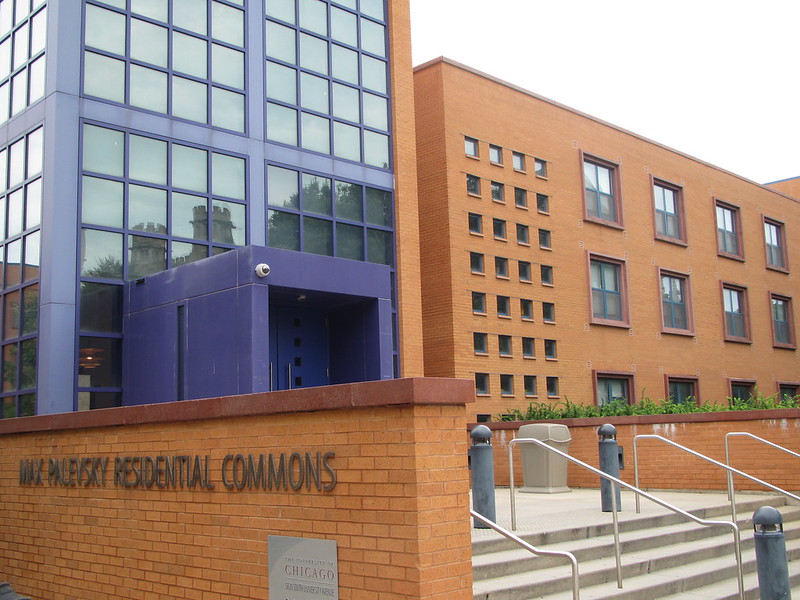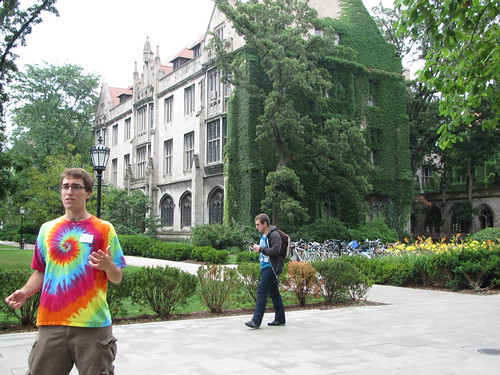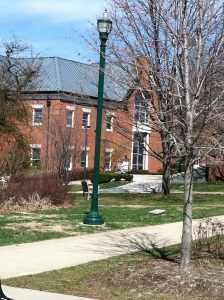You won’t be surprised to hear that healthy college students will be more successful and productive. That’s why, today, I’m sharing these 5 top tips for how to stay healthy in college.
You’ve done the hard work of preparing for and getting into college. All of the testing, tours, interviews, applications, and volunteering have paid off. But once you begin your college education, it can be easy to fall into the trap of too little sleep, not enough water, and other unhealthy habits.
Being Healthy College Students.
Being healthy in college includes the health of your body AND mind.
Understandably, your freshman year of college can be an overwhelming time. The stress of exams, classes, and other responsibilities can take its toll. It’s important to keep your mind and body in tip-top shape to ensure a successful college experience.
The truth about the “Freshman 15”.
When you think of college freshmen and their health, the term “freshman 15” might come to mind. This refers to new college students gaining 15 pounds in their first year of school.
It’s typically associated with eating college dining hall food, not exercising, consuming high-calorie beverages, inadequate sleep, and other unhealthy habits.
In fact, studies show students aren’t likely to gain this much—if they gain at all. Ohio State researchers found most students don’t gain as much as 15 pounds during ALL four years of college. In their study, female students gained an average of 8.9 pounds while men put on an average of 13.4 pounds. Again, this is over four years, not just freshman year.
Staying Physically and Mentally Fit and Healthy in College
When it comes to staying healthy in college, there’s so much more to focus on than your weight and avoiding the freshman 15!
Have a look at these 5 top tips for feeling your best during your academic adventures so you can be a productive, happy college student and get the most out of your experience.
1. Get help.
Most colleges and universities have several resources in place to help students with a multitude of issues. Particularly important are the mental health resources many schools offer.
When college students feel overwhelmed or don’t know where to turn, these counseling and support resources can mean a world of difference. For example, Cornell College’s Counseling Center offers a variety of services, including online screening, education, counseling, and much more.
2. Utilize free resources.

The free resources your college offers will vary by institution.
For example, some offer free laundry for students. This is a time and money-saving consideration for college students that shouldn’t be overlooked.
Most colleges offer free gym memberships for current students to use their on-campus facilities. Take advantage of this service while you have access to it! Keeping active during college will help keep your mind and body sharp. If your school doesn’t offer a free gym membership, look into the discounts offered to college students at off-campus locations.
Speaking of off-campus life, have a look at these pros and cons for living off-campus during college.
3. Eat at regular intervals.
Have you ever had your head buried in a textbook, only to find you haven’t come up for air in hours? During this study session, you’ve likely neglected to eat. Then, you might be tempted to reach for the quickest, most convenient food options to satisfy your hunger.
Unfortunately, these fast food options don’t tend to be the most nourishing choices. Do your best to schedule regular meals and stick to this schedule as much as possible. Planning your meals ahead of time and keeping healthy snacks like granola bars or dried fruit nearby is another way to achieve this goal.
Some students find it hard to eat healthy on a college budget. The truth is, there are plenty of healthy, low-cost foods available. Sometimes it just takes a bit of research to find the right ingredients and recipes that suit your budget and a balanced diet.
Quick Tip: If you’re regularly eating college cafeteria food, start each meal with a serving of fruit or vegetables and you’re less likely to fill up on less nourishing options.
4. Stay hydrated.
Have you developed the habit of grabbing a soda from the vending machine rather than visiting the water fountain? Over time, this choice can have a dramatic effect on your health. To make sure you’re getting enough water, invest in a good quality reusable water bottle to keep handy at all times. This is one of the 7 college essentials worth investing in for your freshman year.
5. Prioritize sleep.
Unfortunately, sleep is often at the bottom of the list of priorities for college students. Instead, things like studying, school work, and social activities take precedence.
While all of these elements are important, you simply won’t be as successful at any of them if you’re sleep-deprived.
Setting up a sleep schedule and sticking to it can be challenging at first. But once you find a pattern that allows you to get enough rest while also fulfilling your other commitments, you’ll find your productivity soars.
Now, I’d love to hear from you. What have your biggest health challenges been during your freshman year of college? What did you find helped you stay healthy during your time at school?
If you’re looking for one-on-one guidance to help you get into (or pay for) college, click here to learn more.










